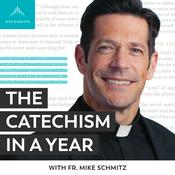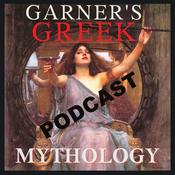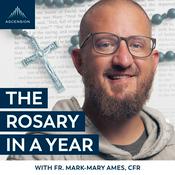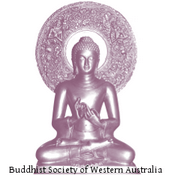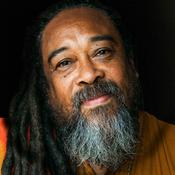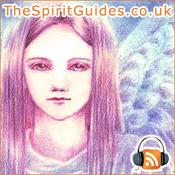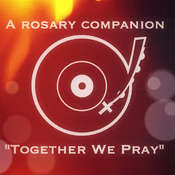Available Episodes
5 of 270
- 4th Thursday in November: Thanksgiving Day (U.S.A.)Fourth Thursday in November: Thanksgiving Day (U.S.A.) Optional Memorial; Liturgical Color: White Life is a gift replete with countless gifts It’s 1542, and the Spanish Franciscan Juan de Padilla, a rugged ex-soldier, is trekking through the high, waving prairie grasses of the buffalo plains of North America at the head of a small band of explorers. Suddenly, an Indian war party of the Kansas people appears on the low horizon. The Spaniards scatter into the tall grasses for cover. But Father Padilla stays, slowly kneels in the moist soil, bows his head in prayer, and doesn’t move an inch. The war party approaches, and as the Spaniards watch from afar, they stretch their bows and fill Father Padilla’s torso with a volley of arrows. He is the first North American martyr. There are no dissenting Protestants anywhere in sight. It’s 1570, and five Spanish Jesuits establish a mission, with chapel and school, to evangelize Indians in the future state of Virginia. In February of 1571, all the Jesuits are hacked to death with the very axes they had given to the Indians for chopping wood. A relief boat arriving a few months later finds Indians on the shore dressed in blood-stained cassocks. The English Potestant settlement of Jamestown is still thirty-six years in the future! It’s April 30, 1598, in modern-day New Mexico. A Spanish explorer and a team of Franciscan priests erect a large cross and solemnly consecrate the vast land before them to Christ the King. The local Indians accept baptism and a large banquet is held, and is still held annually, to commemorate the event. The pilgrims who would one day land in Massachusetts are, in 1598, still in Europe. Throughout the American borderlands, in the Southwest, Florida, Georgia, Virginia, and Texas, hundreds of Spanish missionaries in the 1500s were traversing the deserts, swamps, forests, and plains of the future United States of America saying Mass, teaching the faith, and baptizing, long before a single boat loaded with pilgrims ever slowly floated into an East Coast harbor. The people of the future United States of America gave thanks in many and varied ways long before President Abraham Lincoln, in 1863, established the last Thursday of November “as a day of Thanksgiving and Praise to our beneficent Father who dwelleth in the Heavens.” North America’s native tribes gave thanks in primitive ways common to all pre-modern societies. They honored the gods who formed the mountains like clay, who blew the winds across the prairies, and who caused the rain to fall. These Indians had their sacred dances, sacred dress, and sacred places where their holy men invoked the spirit gods equated with creation. These robust, but primitive, religious impulses lacked an equivalent moral dimension requiring respect for women, prisoners of war, children, or the unknown other. Christian missionaries brought a fuller, more complex religion which built a solid structure on the native culture’s wide base of nature-based cosmologies. When dissenting Protestants disembarked in Massachusetts in 1620, they brought a deep belief in Jesus Christ and in His written word. After numerous settlers perished from disease, hardship, and starvation, they bonded with local Indians to offer thanks to God in 1621 for their tenuous survival. We need not live in desperate and difficult circumstances to fall to our knees in thanks to God for our life and all of its bounty. The intentional disciple must have a permanent attitude of gratitude if she finds it easy to believe when others struggle, if both of her parents were present as she grew up, if the children are healthy, if the job pays well, if the pain in the stomach was nothing at all, if the plane lands safely every time, if the bruised marriage heals, if there is always food at hand, gas in the car, a friend to call, or just one person who wonders where you’ve been the last few hours. There’s a million reasons to be thankful and a million ways to express those million reasons. President Lincoln did not explain why he chose a Thursday as Thanksgiving Day, but perhaps the legacy of Catholicism influenced his decision. Jesus Christ instituted the Holy Eucharist, the ultimate act of Thanksgiving, on a Thursday evening—Holy Thursday. For the Catholic who goes to daily Mass, every day is Thanksgiving Day. God, creation is not just a forum for action but a gift to mankind, a place for men and women, alone created in Your image and likeness, to work out their salvation, to exercise their gifts, and to render due homage and thanks to You for life itself, the gift of all gifts.--------6:24
- Our Lord Jesus Christ, King of the UniverseLast Sunday in Ordinary Time: Our Lord Jesus Christ, King of the Universe Solemnity; Liturgical Color: White or Gold The vastness of creation serves as the Lord’s footstool This last Sunday in Ordinary Time is dedicated to the very highest understanding of the nature, role, and purpose of Jesus of Nazareth. Jesus is multifaceted, the deep hues and contours of his personality revealing themselves to different races and ages in different ways. More personally, even inside of just one single life, a Christian can understand Jesus in more subtle and complex ways as that particular Christian matures. Carpenter, Miracle Worker, Son of Mary, Son of God, Prophet, Messiah, Son of David, Good Shepherd, Healer, Preacher, Logos, Lamb of God, etc. Yet all these titles and identities will give way as the world ends, time is fulfilled, and life with God becomes simply life itself. Jesus’ identity will culminate in His Kingship. It will not be a transitional but a terminal identity. The dead will come nose to nose with King Jesus, feeling His hot breath on their cheeks, as He judges them at their life’s end. And the saved will have King Jesus before them in heaven forever as He renders homage to God the Father in the power of God the Holy Spirit.The feast of “Christ the King” was first established in 1925, and Pope Saint Paul VI expanded its name to “King of the Universe” in 1969. Jesus is not just a King of Hearts. He is more than mankind’s universal Coach, Teacher, or Counselor. By “King of the Universe” the Church is communicating Jesus’ metaphysical scale, that God encompasses all of reality, not just man’s reality. We say in the Nicene Creed that God created all things visible and invisible. So Jesus is King over all the planets, stars, black holes, quasars, and exploding suns in the blackest corners of remote space. He is King over the earth and all its waterfalls, rainforests, mountain peaks, desert plains, and dark sea floors. He lords over all creation because He is its source. Saint Thomas Aquinas taught that God is not the most perfect being inside of creation but being itself. God is reality, not just the most impressive being inhabiting the reality bubble.This feast is an antidote to the private, or compartmentalized, Jesus who impacts only those spaces in the Christian’s life where He is allowed to enter. Jesus wants to reign in every sphere of our lives, at home, on the factory floor, in the yard, at the office, over drinks, on the sports’ field, in the car, at meals, on the phone, and on and on. His field of action has no borders. From one perspective, this is a challenging, and limiting, spirituality. Such an intrusive, all-encompassing God can make life feel like a cage, where self-expression is constrained by His rules. From another perspective, however, the total reign of God in our lives is freeing. It means that He is not found only in Church. Sunday Mass? Of course. But we need not have our fingers on the rosary to be close to God and Mary at all times. God is found inside of the daily duties that are the stuff of life. This is consoling. We are not distracted from the higher things as we manage a family, earn a living, exercise, raise the kids, or take care of the house. When the Lord is King of Everything, mundanities are not banalities. The world is richer and more alive when our life is an all-inclusive vocation.The anointed King was a tangible image of the hidden God in Western culture until modern times. Every earthly king was validated by the mighty God King who stood invisibly behind him, the One who benevolently ruled the universe as His own sacred republic. This understanding of God as a Divine Ruler gave a real sense of order, unity, and common purpose to all of reality which is lacking in modern, secular, democratic societies. Today’s feast does not invoke, however, merely an image of Jesus representing someone else’s Kingship but Jesus actually reigning as King. All the baptized should be glad to be subject to such a benevolent monarch.Christ the King, Your sovereignty over all creation is not heavy. You order all reality toward Yourself and govern Your creatures with justice and humility. Help us to be faithful and subservient to what You desire, so that we can live one day in Your heavenly kingdom.--------6:15
- November 20: St. Bernward of Hildesheim, BishopNovember 20: Saint Bernward of Hildesheim, Bishopc.960–1022 Optional Memorial; Not on Universal Calendar; Liturgical Color: White Patron saint of goldsmiths & architects A well-educated and pious bishop sponsors the practical arts Some doors in the city of Rome draw people in like huge vertical magnets, pulling groups of pilgrims slowly towards them across broad atriums. The dots of laser pointers dance over the doors of the Basilica of St. John Lateran as guides point and explain how these towering doors once swung open onto the Roman Curia, where senators in white togas stood debating matters of empire. The colossal, sober, bronze doors of the 2nd century Pantheon still hang from its jambs. And the large, intricate, wood paneled doors of Santa Sabina date from the 430s! The eyes of today’s saint, Bernward of Hildesheim, gazed up in wonder at these very same sets of doors when he visited Rome in the year 1001. And while he gazed, he also resolved to carry back just a bit of this Roman elegance, this Roman nobility, this Roman weight, to the cold land, to the far land, he had come from. St. Bernward of Hildesheim lived at the half-way point between us and Jesus Christ. His life spanned mankind’s crossing from the first to the second millennium. Bernward had an impeccable pedigree, with the branches of his noble family tree extending throughout lower Saxony, in today’s northern Germany. His family lineage, fine education, and personal piety opened doors of power and influence to him throughout his life. He was chosen as the tutor to the most important man of his time and place, Otto III, who became the Holy Roman Emperor. And he was appointed bishop of Hildesheim at a young age in 993 and remained in that position, and in that town, until he breathed his last thirty years later. Bernward lived long before the founding of the great universities of Europe, in an age when monasteries and cathedrals were Europe’s preeminent centers of learning. A cathedral school, in particular, was the equivalent of an elite prep school today. It was as important to a diocese as the cathedral itself. Bernward attended the cathedral school of Hildesheim as a youth long before becoming bishop of the same diocese. The academic theology done in Europe’s universities starting in the 1200s created a more disciplined and professional guild of theologians but moved theology to a neutral location. In Bernward’s more feudal age, men learned theology in the beating heart of the church, in the red-hot centers of prayer and apostolic activity where the faithful habitually gathered – in cathedrals and monasteries. Bishops, thinkers, and authors baptized babies, said funeral masses, anointed the sick, sang vespers, and led processions while also studying and writing. Their audience was the faithful. Their forum was the pulpit. University-based theology was severed from the great centers of spirituality so familiar to the first millennium. It was more scientific, yes, but also more dry. St. Bernward was a man of the first millennium. His public was not other academics but his happy people. His theology was both intellectual and practical, with church ideas and church life braided tightly together, as they should be. Bernward mastered the seven liberal arts common to his age and showed a keen interest in practical craftmanship. He was an energetic bishop who commissioned the building of castles, an abbey, and numerous decorative items for his churches. Inspired by his extended roman visit, he ordered a huge set of bronze doors for his cathedral, known as the Bernward doors. These commanding pieces of functional art, with their simple but expressive figures in deep relief, can still be admired today. They were not made of perishable material. They were made to last and have lasted for half the life of the church. St. Bernward’s kind disappeared with his epoch. The monastic reforms of Cluny and the later groundbreaking ways of the Franciscan and Dominican Orders spread like wildfire in the 1200s and brought a definitive end to first millennium Catholicism. We remember St. Bernward today because he was a model bishop committed to one diocese and one people in matters practical and spiritual. St. Bernward, your education, piety, mortification, and practical concern for your faithful have kept the flame of your memory burning in your see city. We seek your divine intercession on behalf of all bishops, that they may emulate your fund of virtues. Amen.--------7:04
- October 24: Saint Anthony Mary Claret, BishopOctober 24: Saint Anthony Mary Claret, Bishop1807–1870Optional Memorial; Liturgical Color: WhitePatron Saint of textile merchants, the Catholic press, and vocational educatorsA tireless bishop founds an Order and moves mountainsToday’s saint was a finely tuned, high-octane engine of evangelization. Anthony Claret was from Catalonia, the region around Barcelona, Spain. He studied for the priesthood in Rome, was ordained in 1835, and then returned to Spain to spend ten years giving missions. In 1849 he founded the Congregation of the Missionary Sons of the Immaculate Heart of Mary, more commonly known as the Claretians in honor of their founder. The Order was particularly focused on publishing works of devotion and piety, books offering spiritual advice, and numerous pamphlets of basic catechesis. The Claretians filled a need and, as publishers, enjoyed enormous success. They published millions and millions of books and pamphlets. And all of this was spearheaded by Anthony, who not only generated doctrinal content but who also mastered the technical details of printing, learned the business side of the industry, and edited the published works himself.In 1851, when Anthony was appointed the Archbishop of Santiago de Cuba, the full array of his talents were put on display. He added the name “Mary” at his episcopal consecration and began a remarkably fruitful seven years as Archbishop. He traveled incessantly throughout his territory, restored the seminary, established hospitals and dozens of new parishes, and personally visited the sick and dying. He was ever present and provocative in his pastoral outreach, so much so that attempts were made on his life by the apathetic offended by his success. He was severely injured in one of these attempts but survived. Bishop Anthony was a true man of action. Creative ideas on how to spread the Gospel flowed constantly from his mind. Every tribulation and hardship was, for him, just an invitation to deeper commitment. It was nothing for Anthony to expend all of his energy one day and to wake up and do the same the next day. He was replenished by exhausting himself. In 1857 he resigned as Archbishop when he was recalled to Spain to become the personal chaplain to the Queen. This sedentary life was a cross for Anthony, who was a born missionary. But he continued to dedicate himself to apostolic activity as much as his court obligations allowed. At the Royal Monastery outside of Madrid where he was assigned, he set up a science library, a school for music and languages, a museum of natural history, and a fraternity composed of cultural leaders and intellectuals that grew to national prominence. Anthony was such a motor of evangelization and cultural advancement that he earned powerful enemies who feared his success. They eventually drove him from Spain to France, where he died in 1870.Like so many saints, Anthony Mary Claret was a double or triple threat. He was so multi-faceted, so skilled in so many diverse fields, that it is hard to believe that one man accomplished so much. He worked well, and he worked quickly. Like many other saints, behind Anthony’s labors was a regimented life of prayer, daily Mass, the rosary, fasting, spiritual reading, self-discipline and moral strictness. He was perpetually in the presence of God, and in his later years experienced spiritual ecstasies and performed miraculous healings. This incredible man of action and prayer was canonized in 1950.Saint Anthony Mary Claret, you outdid all your peers in dedication to Christ, Mary, and the Church. We pray that you intercede in heaven to give all bishops the graces and the skills to lead their flocks in prayer, education, and devotion as you did.--------5:23
- October 23: Saint John of Capistrano, PriestOctober 23: Saint John of Capistrano, Priest1386–1456Optional Memorial; Liturgical Color: WhitePatron Saint of military chaplains and juristsA worldly man becomes a Franciscan and a great preacherToday’s saint, like Saints Francis of Assisi, Maximilian Kolbe, Jerome Emiliani and many other male saints, was a prisoner of war. And just like all the others, imprisonment changed John of Capistrano forever. Being confined to the four walls of a prison made him realize how precious was the life that God had given him and how sad it was to waste it on frivolities. John had studied law before he was captured in battle and had even become the mayor of the major Italian city of Perugia. He was bright, energetic, and successful. Life was his oyster. John’s mature decision to enter religious life was not, then, an escape hatch from real life or the last exit on a dead-end road. He had silver in his hands but dropped it to stretch for the gold. In a shocking display of humility after giving his life to Christ, John mounted a donkey backwards and rode through the streets of his town wearing only a list of his worst sins. People ridiculed him and pelted him with mud and dung. In this forlorn state, he presented himself at the door of a Franciscan monastery to seek admission. He was immediately accepted. After studies, he was ordained a priest in 1421.John’s well of humility had no bottom, and his physical austerities never ceased. He continually mortified himself. He fasted, went barefoot, and slept little throughout his life. He was a protégé of the great Saint Bernardino of Siena, a fellow Franciscan. Like Bernardino, John became a renowned preacher and traveled throughout Central and Northern Europe drawing vast crowds. John lived poverty so totally that he, along with other reforming Franciscans of his generation, made it appear as if they were the measure for Christ’s poverty, instead of Christ being the example and inspiration for Franciscan poverty. John’s radical poverty and other reforming efforts were also the beginning of the divisions that would eventually cleave the body Franciscan into three distinct Orders.Already famous in his mid-sixties as a theologian, preacher, and inquisitor, John was appointed by the Pope to lead a team of Franciscan missionaries to Hungary and the Bohemian peoples of Central Europe. John Hus, a Bohemian priest, had been burned at the stake by the Church for heresy in 1415. This searing event had caused his followers, known as Hussites, to increasingly separate themselves from the Church. Hussite theology was a precursor to the Protestant movement that engulfed Northern Europe one hundred years after Hus’ death. The Pope wanted John of Capistrano to either convert the Hussites or to subjugate them.John’s mission to Hungary and Central Europe produced mixed results. He was an effective crusher of heretics, but his techniques did not always display the tact such a delicate mission required. After the shocking fall of Constantinople to the Ottoman Turks in 1453, John led a preaching crusade to unify a Christian response to the threat of impending Muslim expansion. At the age of seventy, Saint John personally led troops in a successful battle to defend Belgrade from the Turks, but he died soon afterward. Over two centuries after his death, John and his melodic last name of Capistrano were immortalized by his Franciscan brothers when they named a large mission in Southern California in his honor. The Mission of San Juan Capistrano, although ruined by earthquakes, is a much visited stop on the famous chain of missions that wind up and down the spine of California. This soldier-priest and tireless reformer and preacher was canonized in 1724.Saint John of Capistrano, we ask your intercession to embolden all preachers to present the truths of Catholicism in all their fullness and vigor, and to buttress that preaching by an impeccable life of virtue and apostolic activity.--------5:41
More Religion & Spirituality podcasts
Trending Religion & Spirituality podcasts
About Catholic Saints & Feasts
"Catholic Saints & Feasts" offers a dramatic reflection on each saint and feast day of the General Calendar of the Catholic Church. The reflections are taken from the four volume book series: "Saints & Feasts of the Catholic Calendar," written by Fr. Michael Black.These reflections profile the theological bone breakers, the verbal flame throwers, the ocean crossers, the heart-melters, and the sweet-chanting virgin-martyrs who populate the liturgical calendar of the Catholic Church.
Podcast websiteListen to Catholic Saints & Feasts, Michael Singer Podcast and many other podcasts from around the world with the radio.net app
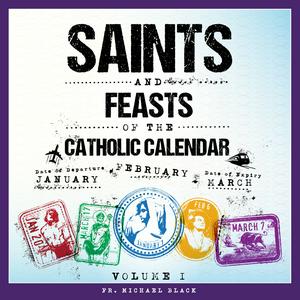
Get the free radio.net app
- Stations and podcasts to bookmark
- Stream via Wi-Fi or Bluetooth
- Supports Carplay & Android Auto
- Many other app features
Get the free radio.net app
- Stations and podcasts to bookmark
- Stream via Wi-Fi or Bluetooth
- Supports Carplay & Android Auto
- Many other app features


Catholic Saints & Feasts
Scan code,
download the app,
start listening.
download the app,
start listening.




